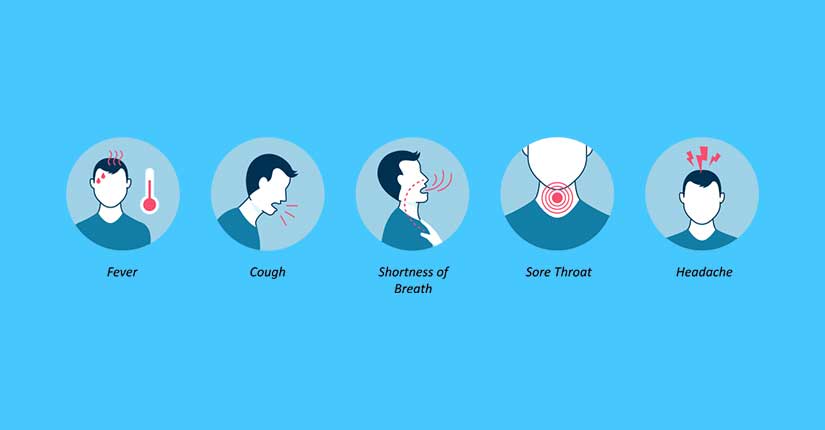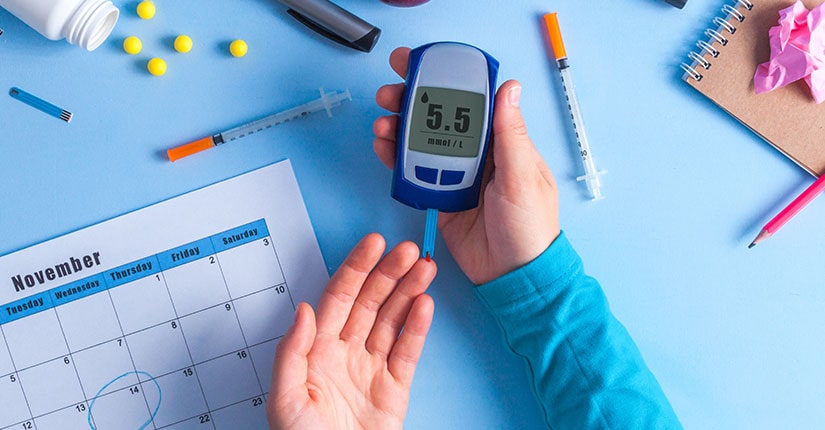List of Updated Symptoms of Coronavirus Infection as per CDC
By Nmami Life Editorial 04-Jul 2020 Reading Time: 5 Mins

The cases of fatal coronavirus have only been growing at an alarming rate since we first heard of it. It has been almost six months or so and official figures released by John Hopkins University dictate that the infection rate has crossed the 10 million mark and 500,000 deaths have been reported.
While some countries have flattened the curve and using experimental therapies to battle the surge, there’s a lot still to be known about the SARS-COV2 virus. Even as medical experts are still trying to find out how the virus attacks the body, newer symptoms are being discovered every passing day. Looking into this, Centres of Disease Control and Prevention (CDC), USA recently added three new symptoms to the list of COVID-19 symptoms.
The CDC, earlier, also issued a statement mentioning that while the SARS-COV2 virus presents typical symptoms, some of these additional symptoms, which have now been listed can, appear way before other symptoms and hence, should be taken care of.
What are the recent additional symptoms?
- One of the most common symptoms of COVID-19 was thought to be a nagging dry cough or a cold. According to the latest findings, patients are also reporting a congested chest and a runny nose as a symptom in the early days of the infection striking. In many cases, it was observed that the virus has been known to enter from the nasal tract, which then gives rise to cases of nasal infection and upper respiratory symptoms.
- Another gastrointestinal issue one shouldn’t ignore is diarrhea. It is now known that just like other flu causing viruses, COVID-19 could also attack the digestive system and make it worse. In a few cases, gastrointestinal symptoms have also been known to slow down recovery. If you observe symptoms of diarrhea, such as watery or frequent stool, lightheadedness, abdominal cramps, or upset stomach for 3-4 days, or feel other known COVID-19 symptoms kick in as well, it is best to practice preventive measures and get the required treatment.
- Apart from these, the virus has been noticed to attack patients in more ways than a typical coronavirus. From dry cough, long-lasting fever, headache, some of the lesser-known symptoms of the virus include headache, loss of sense of smell or taste, confusion, breathing difficulty, dizziness, eye flu, blue lips, intense chills, muscle pain, tiredness.
Growing research has also seen that the symptoms seem to be different in kids. Many are reporting signs similar to that of Kawasaki’s disease, which is a disease-causing inflammation and peculiar COVID toes as well. In pregnant women, the symptoms can even lead to hospitalization.
While the list of symptoms continues to grow as scientists continue to research more, experts are now realizing the sensitivity of the situation as cases continue to soar in number. While it was thought of as a respiratory virus earlier, doctors are now trying to decode the various ways the virus can actually cripple the body- from neurological relapse, degeneration, and inflammatory attack, the virus can prove to be far more dangerous than we thought of it to be.
Over to you
Doctors suggest while COVID-19 isn’t affecting young children to the extent it has some adults, these new symptoms could be contagious and even more harmful if someone with a compromised immune system catches it.
Health experts warn that even if you think it’s just a regular flu cold, it’s not a bad idea to pick up the phone and consult a doctor.

















